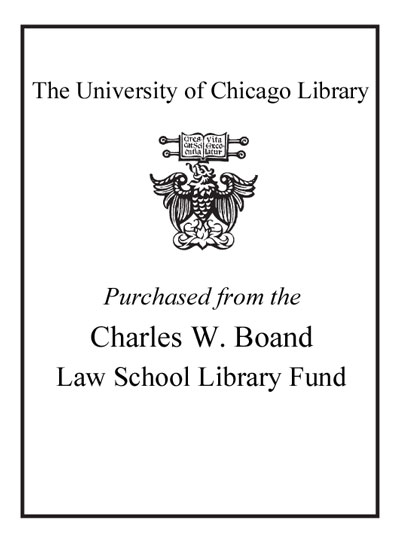| Summary: | Jewry law, the corpus of legal texts and practices that regulated the life of the Jews in their relations with the medieval Christian society, in one of the main sources of evidence on medieval Jewish history. This volume presents a comprehensive collection of the legal texts bearing specifically on the Jews during the early Middle Ages, from the disappearance of the unitary imperial system in the fifth and sixth centuries to the emergence of centralized governmental structures and the codification of canon law, roughly between the close of the eleventh century and the middle of the twelth century.
The special legal texts that were evolved in regard to the Jews are important for two basic reasons. First, they document the ideological stances, policies, and practical means of application adopted and carried out in regard to the Jews by the ecclesiastical and the secular authorities. This documentation allows historians to reconstruct the roles performed by these two governmental networks, which practically monopolized between them the authority and the responsibility for the creation and application of Jewry law. Second, the importance of this body of texts derives from its specificity in regard to the Jews. By definition, common law and other "extraneous" laws were not directed specifically at Jews. They were applicable to
Jews when Jews were included in a population subject to them or to the extent that Jews were involved in situations they controlled. This legal situation, which presupposes that Jews and non-Jews share a certain legal equality, at least in the matters
covered by these laws, clearly diverges from the fundamental assumption that provided Jewry law with its main justification, namely, the legitimate otherness of the Jews as expressed and embodied in their special legal regime. While the evidence on the participation of the Jews in general legal frameworks should be considered as extremely important, the search for their specificity leads the historian, unavoidably, to the special legal texts and practices evolved in their regard.
Amnon Linder's aim has been comprehensiveness rather than selectivity. The Jews in Legal Sources of the Early Middle Ages is the first and only corpus of the relevant sources in their original Greek or
Latin and in English translation. The texts have been arranged in five parts, with each part consisting of separate sources, 142 in all. They are divided into 1,016 smaller text-units, given in their original textual forms (canons, chapters, paragraphs, laws). Each source opens with a short introduction on its history and transmission. Each text-unit opens with exact reference (books, titles, chapters, paragraphs, laws); its original incipit; its rubric; and its inscription in translation. Bibliographical references and footnotes have been restricted to the bare minimum, but they are designed to provide basic pointers for a
more extensive bibliographical search. This
book provides historians with all the relevant
texts available in print, which Linder has supplemented with certain texts still unpublished, known from manuscript versions
only. |
|---|

